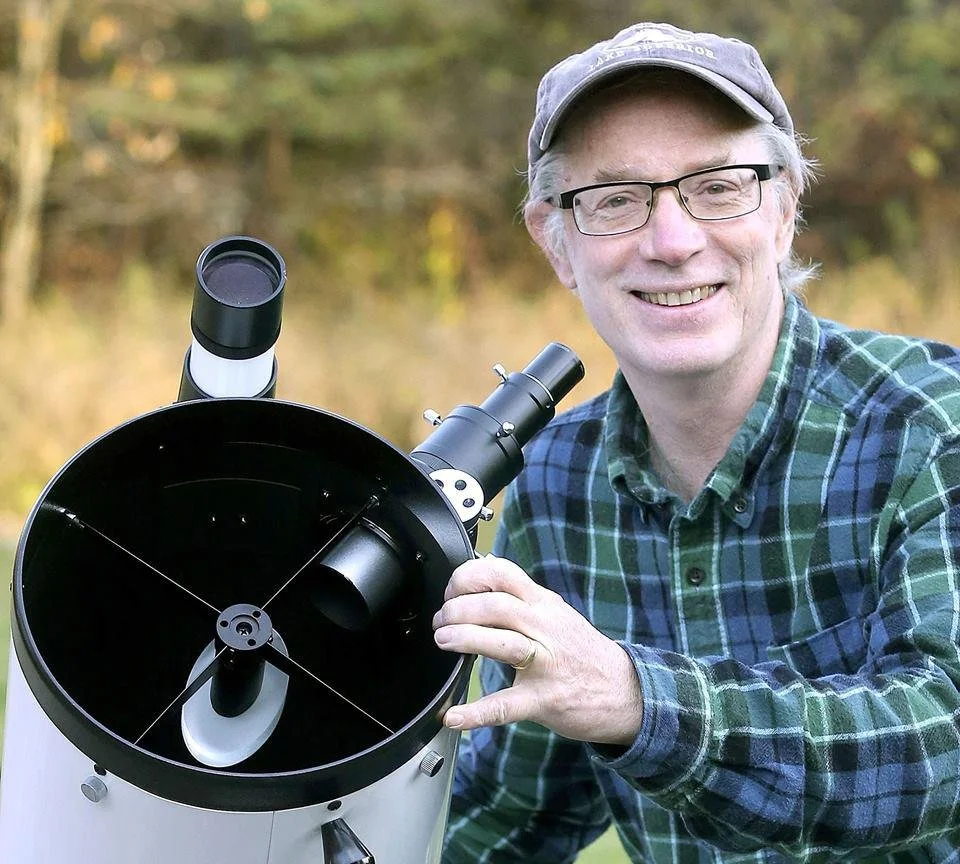April 2022 Night Sky Happenings
Night Sky Explorer:
The evening sky has been devoid of bright planets this winter. That drought finally ends early in the third week of April when Mercury returns at dusk. This is a month of amazing planetary conjunctions, starting with Mars and Saturn in early April and finishing with a bang, when Jupiter and Venus pair up with each other and the delicate crescent moon at month’s end.
*Note: When “a.m.” follows the date, it refers to an event visible in the morning sky before or during dawn.
Events:
April 1— New moon
April 4 and 5 (a.m.) – Mars and Saturn will be in close conjunction just 1/2° apart low in the southeastern sky about an hour before sunrise these two mornings. Look just to the right of Venus to spot these fainter planets.
April 4 – Crescent moon shines just below the Pleiades or “Seven Sisters” cluster tonight
April 8 — First quarter moon hangs below Gemini the Twins’ brightest stars Pollux (upper left) and Castor (upper right).
April 16 — Full Pink Moon
April 18-30 – Best evening appearance of Mercury this year from about April 20 through early May. Look 45 minutes to an hour after sunset low in the northwestern sky. Mercury will be the only bright “star” visible here – use binoculars to aid your search. The planet passes just below the Pleiades April 27-30.
April 22 and 23 (a.m.) – Peak of the annual Lyrid meteor shower. Fifteen meteors per hour are expected from a dark sky in the direction of Vega from about midnight till 3 or 4 a.m. After those times, the last quarter moon brightens the sky and will wash out fainter meteors. Both mornings are good.
April 23 — Last quarter moon
April 27 (a.m.) – Delicate lunar crescent hovers below Venus and Jupiter about 45 minutes before sunrise this morning to make a stunning trio. Not to miss!
April 30 (a.m.) – Spectacular close conjunction of Venus and Jupiter, the two brightest planets. They’ll be less than one full-moon-diameter apart. Look low in the southeastern sky about 45 minutes before sunup. They’ll be nearly as tight on April 29 and May 1.
Download a free, monthly star map at skymaps.com
Bob King is an amateur astronomer, author, and passionate educator. He served as a photographer and photo editor at the Duluth News Tribune for 39 years and taught at the UMD planetarium. Bob’s work had a great impact on Voyageurs National Park. To achieve International Dark Sky Park certification, the park was required to host dark sky education events. Through the Night Sky Explorer webinars, the Conservancy was able to fulfill this component and help secure the certification for Voyageurs National Park. We can’t thank Bob King enough for sharing his talents and knowledge with the Conservancy community to support dark sky preservation.

